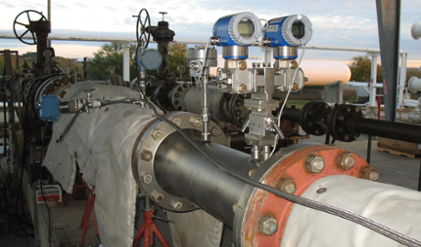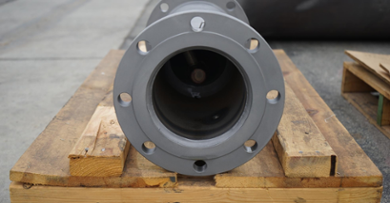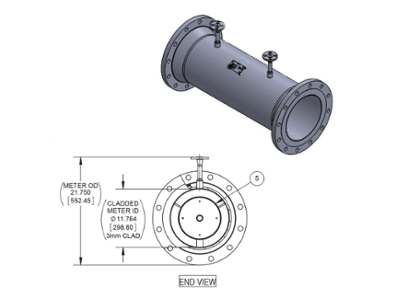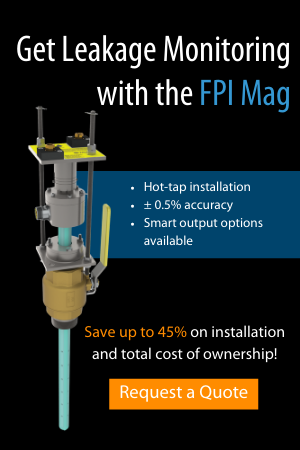V-Cone vs. Venturi: A Comparison
The “V” in V-Cone® is often mistaken to mean “Venturi-Cone,” however, this is not the case. The “V” represents the shape of the cone in the meter itself, designed to measure flow via the Bernoulli principle. Both the V-Cone and the Venturi are both differential pressure flow measurement devices, but beyond that, there are more differences than similarities.
Engineers will often find themselves comparing these two measurement devices when considering a meter for a new or existing flow project.
So how do these meters stand out?
By evaluating your application specifications and concerns, and how the meters address them, you can make the best-informed decision for your flow project.
Cost Concerns and Flexibility
The V-Cone requires minimal-to-no straight-run pipe to maintain up to ±0.5% accuracy, making it an ideal choice for users wanting to avoid repiping an existing setup, or those with limited space. The Venturi requires a straight-run of 5 to 20 diameters upstream, on average, which may inflate a budget with additional piping to spec into the project.
Depending upon the project, exotic materials for construction might be imperative, adding cost. Flange to flange, a Venturi meter is dimensionally much longer than a V-Cone, so naturally, a Venturi manufactured from exotic materials is more expensive than a V-Cone.

A V-Cone with custom pressure valves.
Both a Venturi meter and a V-Cone can be customized roughly the same amount in terms of end connections, pressure taps, and the variety of materials. Cladding, the process of laying a more corrosive-resistant, generally more expensive metal over top of cheaper material, may also be a viable solution for cost-savings.
Size can affect cost as well. Once a meter is manufactured over a 16-inch diameter, the V-Cone typically becomes more cost-effective, as the amount of raw material involved to manufacture the Venturi is greater than the V-Cone. The pitfalls of a large line-size Venturi, like excessive weight and size, can cause installation hassles and production costs to skyrocket.
Flow Concerns
The flexibility of the technology may also be what sways the decision to choose a V-Cone over a Venturi, or vice-versa. For customers anticipating or experiencing a wide range of flows, the V-Cone’s turndown ratio makes it an attractive solution. A V-Cone’s standard turndown ratio is 10:1 or higher, whereas a Venturi is typically 4:1, so if a wide range of flow rates is expected in the application, the V-Cone is a better fit for the project.
Meeting Flow Meter Standards
Oftentimes, certain regulations and standards will determine which flow measurement solutions are available for implementation. Many companies require their flow meters to manufactured and operated to ISO 5167, and both the V-Cone and Venturi can comply with this standard upon request. This standard ensures that the manufacturing of the meters meets certain specifications for straight-run requirements, site installation, and more, through calibration of the meter or dimensional check.
McCrometer meets the ISO 5167-5 standard for cone meters by dimensional check of the meter or by full calibration of the V-Cone over the entire Reynolds range. This allows the V-Cone to achieve its up to ±0.5% accuracy; McCrometer calibrates all meters manufactured, so customers have confidence in their V-Cone’s performance.
The Venturi meter offers ± 0.7% to ±1% accuracy when calibrated and built to the ISO 5167-4 standard. However, if the meter is built to the standard but not calibrated, any irregularities in the pipe won’t be caught before the manufacturer ships it to the customer site, as there wouldn’t be testing of the meter prior to installation.
By choosing a V-Cone, you’re choosing peace of mind, as every V-Cone is wet-calibrated and arrives to the customer complete with a calibration report with a list of inspection points. In addition to the ISO standards, V-Cone also meets other standards including the pressure equipment directive (PED) and other material standards. For additional information about the standards and regulations that McCrometer and our products meet, take a look at our blog covering the topic.
Industries and Verticals
V-Cones as well as Venturi meters are popular in the oil and gas and energy sectors, as they’re robust options for what are typically harsh environments. Depending on the individual application, however, choosing one meter over the other will become obvious.
The V-Cone is a popular choice for floating production storage and offloading (FPSO) units, as the meter’s straight-run requirements meet space and weight regulations of the floating vessel. Popular oil and gas applications that have high pressure lines need thicker-walled pipe, so every inch of pipeline adds significant weight to a vessel limited in real estate and structural load.
In smaller pipeline industrial applications, the lower-cost Venturi meter might be preferential to an engineer with plenty of space to run straight pipe, especially when the meter needed is less than a 16-inch diameter.
Custom Meters for Unique Flow Applications
As is typical for other meters, whether you choose a V-Cone or a Venturi is wholly dependent upon the needs of your flow project, and what criteria must be met. What works for an offshore platform or a small retrofit project may not work for an industrial application requiring a large quantity of small line-size meters.
The good news – McCrometer’s team of expert engineers is available to discuss your flow project requirements and determine if a custom V-Cone solution will work for you. For more information, check out the V-Cone product page or contact the factory for a quote
Related Posts
Featured Posts
Get into the Groove: McCrometer’s Grooved-End Mag Meter
We’ll share the big news upfront! McCrometer’s integrated grooved-end mag meter is the only version on the market, and it’s revolutionary for a reason. Engineered to meet customer demand, this meter launched in January 2024 and is available for order now. This...
Produced Water and Blending Flow Meter Use Case
Produced Water is a byproduct of oil production. Whether it is a byproduct of flow back or the water component of the oil separation process, produced water can be a difficult measurement point but is a very important part of the process. Several parameters make it...
Get your Groove on Now: McCrometer’s Grooved-End Mag Meter Now Available
It is time to get your Groove On. McCrometer has released their innovative Electromagnetic Flow Meter with integrated Grooved End connections. Are you tired of bolting on extra flanges with Victaulic end connections welded to them? It is time consuming and makes an...
Request More Information








